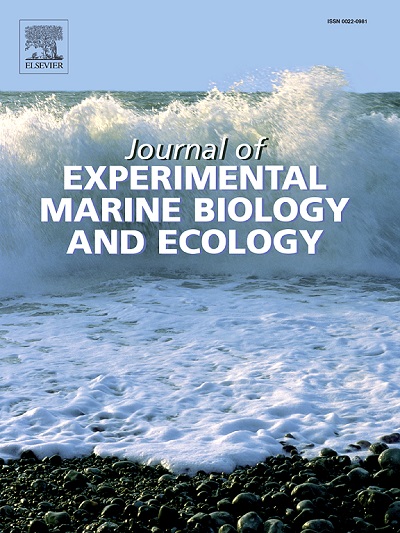揭示层叠纲多年生延迟配子体的秘密生活
IF 1.8
3区 生物学
Q3 ECOLOGY
Journal of Experimental Marine Biology and Ecology
Pub Date : 2025-02-01
DOI:10.1016/j.jembe.2025.152081
引用次数: 0
摘要
自然界中对层压藻的研究主要集中在孢子体阶段,往往忽略了双阶段生命周期的另一半;可以独立生长和繁殖的配子体。本研究探讨了配子体在叠层动物中可能具有的潜在功能,主要集中在研究较少的多年延迟配子体(MAD),并将其与典型研究的新形成的单细胞或延迟配子体进行了比较。与单细胞配子体或年轻的多细胞配子体相比,MAD配子体在生殖前具有较长的营养生长特征,在形态和功能上存在显著差异。在讨论导致这些老配子体形成的进化压力时,出现了关键的基本问题。为什么MAD配子体实际上存在?为什么MAD配子体似乎可以永远活下去?为什么MAD配子体是无性生长的,而且似乎没有限制?我们假设了一个更新的层压藻生命周期模型,假设了两种表型不同的配子体类型,每种配子体都具有独特的形态、功能和生殖行为。该生命周期模型将更多的注意力集中在未被充分研究的MAD配子体及其在自然界中的作用上,从而推动更多的研究,从而全面理解影响MAD配子体的培养内选择压力和体内生命周期动力学。由于揭开了MAD配子体的秘密生活,对未来海带驯化和大规模野生化工作的成功至关重要。本文章由计算机程序翻译,如有差异,请以英文原文为准。
Unravelling the secret life of MultiAnnual delayed gametophytes in the order of the Laminariales
Research within the Laminariales in nature has predominantly focused on the sporophyte phase, often overlooking the other half of a bi-phasic life cycle; the gametophytes which can grow and propagate independently. This study examines the potential function that gametophytes might have within the Laminariales, focussing primarily on the understudied MultiAnnual Delayed (MAD) gametophyte, and comparing it with the typically researched newly formed single celled or delayed gametophyte. MAD gametophytes, characterized by extended vegetative growth before reproduction, display notable morphological and functional differences compared to their single-celled or younger multicellular counterparts. Key fundamental questions arise when discussing the evolutionary pressures that result in the formation of these older gametophytes. Why do MAD gametophytes actually exist? Why can MAD gametophytes seemingly live forever? Why do MAD gametophytes grow vegetatively and seemingly without limits? We posit an updated life cycle model for Laminariales, hypothesizing two phenotypically different gametophyte types, each with unique morphologies, functionalities, and reproductive behaviors. This life cycle model puts more focus on the understudied MAD gametophytes and their role in nature, thereby aiming to push for more research and thus comprehensive understanding of the in-culture selection pressures and in vivo life cycle dynamics that affect MAD gametophytes. An understanding that is pertinent since unravelling the secret life of MAD gametophytes is fundamental to the success of future kelp domestication and large scale rewilding efforts.
求助全文
通过发布文献求助,成功后即可免费获取论文全文。
去求助
来源期刊
CiteScore
4.30
自引率
0.00%
发文量
98
审稿时长
14 weeks
期刊介绍:
The Journal of Experimental Marine Biology and Ecology provides a forum for experimental ecological research on marine organisms in relation to their environment. Topic areas include studies that focus on biochemistry, physiology, behavior, genetics, and ecological theory. The main emphasis of the Journal lies in hypothesis driven experimental work, both from the laboratory and the field. Natural experiments or descriptive studies that elucidate fundamental ecological processes are welcome. Submissions should have a broad ecological framework beyond the specific study organism or geographic region.
Short communications that highlight emerging issues and exciting discoveries within five printed pages will receive a rapid turnaround. Papers describing important new analytical, computational, experimental and theoretical techniques and methods are encouraged and will be highlighted as Methodological Advances. We welcome proposals for Review Papers synthesizing a specific field within marine ecology. Finally, the journal aims to publish Special Issues at regular intervals synthesizing a particular field of marine science. All printed papers undergo a peer review process before being accepted and will receive a first decision within three months.

 求助内容:
求助内容: 应助结果提醒方式:
应助结果提醒方式:


